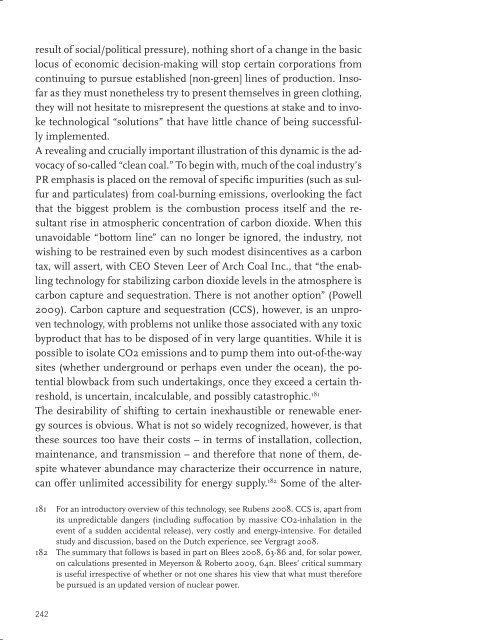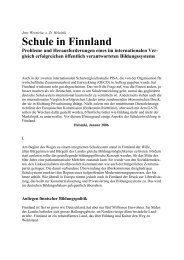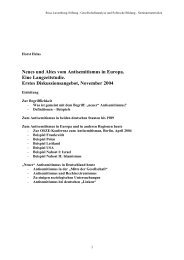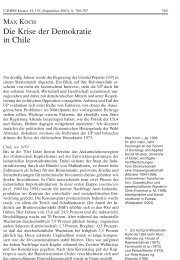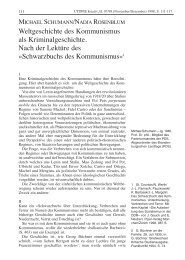Grünen Kapitalismus - Rosa-Luxemburg-Stiftung
Grünen Kapitalismus - Rosa-Luxemburg-Stiftung
Grünen Kapitalismus - Rosa-Luxemburg-Stiftung
Erfolgreiche ePaper selbst erstellen
Machen Sie aus Ihren PDF Publikationen ein blätterbares Flipbook mit unserer einzigartigen Google optimierten e-Paper Software.
esult of social/political pressure), nothing short of a change in the basic<br />
locus of economic decision-making will stop certain corporations from<br />
continuing to pursue established [non-green] lines of production. Insofar<br />
as they must nonetheless try to present themselves in green clothing,<br />
they will not hesitate to misrepresent the questions at stake and to invoke<br />
technological “solutions” that have little chance of being successfully<br />
implemented.<br />
A revealing and crucially important illustration of this dynamic is the advocacy<br />
of so-called “clean coal.” To begin with, much of the coal industry’s<br />
PR emphasis is placed on the removal of specific impurities (such as sulfur<br />
and particulates) from coal-burning emissions, overlooking the fact<br />
that the biggest problem is the combustion process itself and the resultant<br />
rise in atmospheric concentration of carbon dioxide. When this<br />
unavoidable “bottom line” can no longer be ignored, the industry, not<br />
wishing to be restrained even by such modest disincentives as a carbon<br />
tax, will assert, with CEO Steven Leer of Arch Coal Inc., that “the enabling<br />
technology for stabilizing carbon dioxide levels in the atmosphere is<br />
carbon capture and sequestration. There is not another option” (Powell<br />
2009). Carbon capture and sequestration (CCS), however, is an unproven<br />
technology, with problems not unlike those associated with any toxic<br />
byproduct that has to be disposed of in very large quantities. While it is<br />
possible to isolate CO2 emissions and to pump them into out-of-the-way<br />
sites (whether underground or perhaps even under the ocean), the potential<br />
blowback from such undertakings, once they exceed a certain threshold,<br />
is uncertain, incalculable, and possibly catastrophic. 181<br />
The desirability of shifting to certain inexhaustible or renewable energy<br />
sources is obvious. What is not so widely recognized, however, is that<br />
these sources too have their costs – in terms of installation, collection,<br />
maintenance, and transmission – and therefore that none of them, despite<br />
whatever abundance may characterize their occurrence in nature,<br />
can offer unlimited accessibility for energy supply. 182 Some of the alter-<br />
181 For an introductory overview of this technology, see Rubens 2008. CCS is, apart from<br />
its unpredictable dangers (including suffocation by massive CO2-inhalation in the<br />
event of a sudden accidental release), very costly and energy-intensive. For detailed<br />
study and discussion, based on the Dutch experience, see Vergragt 2008.<br />
182 The summary that follows is based in part on Blees 2008, 63-86 and, for solar power,<br />
on calculations presented in Meyerson & Roberto 2009, 64n. Blees’ critical summary<br />
is useful irrespective of whether or not one shares his view that what must therefore<br />
be pursued is an updated version of nuclear power.<br />
242


